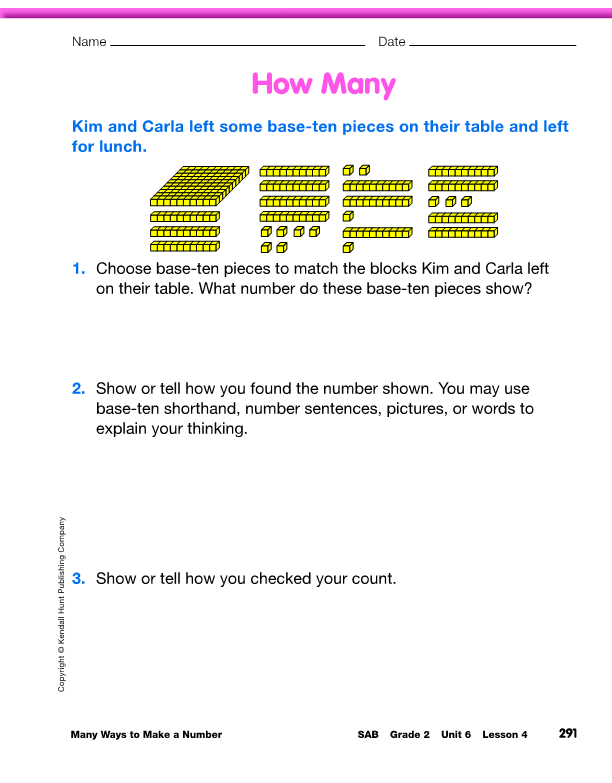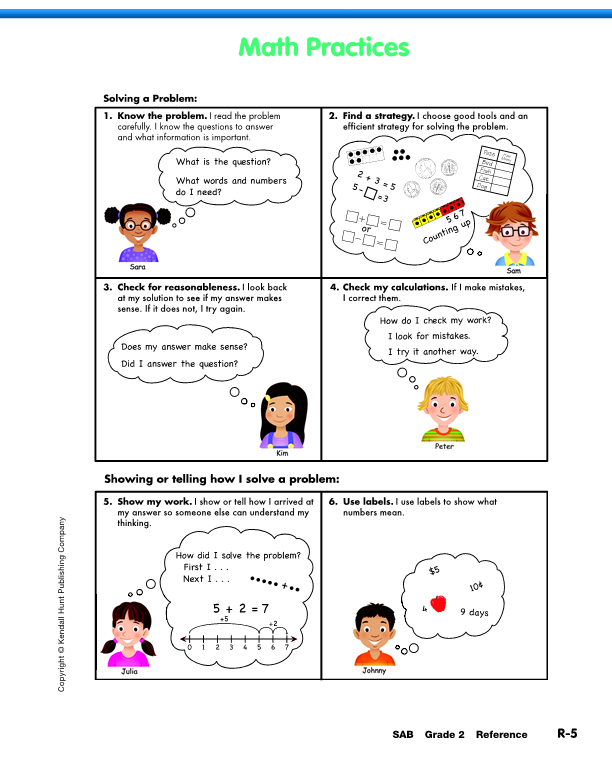Use the How Many page in the Student Activity Book with
the Feedback Box to assess students' abilities to represent
two-digit and three-digit numbers using base-ten pieces [E1]; compose
and decompose number using ones, tens, and hundreds [E2]; show
and recognize partitions of numbers using base-ten pieces and
number sentences [E3]; recognize that different partitions of a
number have the same total [E5]; find a strategy [MPE2];
check calculations [MPE4]; and show their work [MPE5].
Some questions that can help guide your feedback and
evaluation:
- Did the student make trades that resulted in a
different partition yet the number stayed the same?
- Did the student apply the appropriate value to the
base-ten pieces to determine the number represented?
- Did the student show how they checked their count?
The Workshop in Lesson 7 provides targeted practice on
these Expectations.
Introduce the problem on the How Many page in the Student
Activity Book and display the Math Practices page from the
Student Activity Book Reference section. Before students start
working on the problem, discuss the Math Practices Expectations.
- What tools can you use to share your thinking on
paper? (I can use words, base-ten shorthand, number sentences,
and pictures.)
- How can you check your count? (I can count the pieces
two different ways to see if I agree.)
Tell students to focus on Math Practices Expectations 2,
find a strategy, Expectation 4, check my calculations, and
Expectation 5, show my work as they work. Have extra skinnies and
bits for students who choose to model the problem as they will
need more than their shared set of supplies. Once students are
working, circulate to observe students and answer questions. See
Figure 2 for samples of student work on this problem.
















